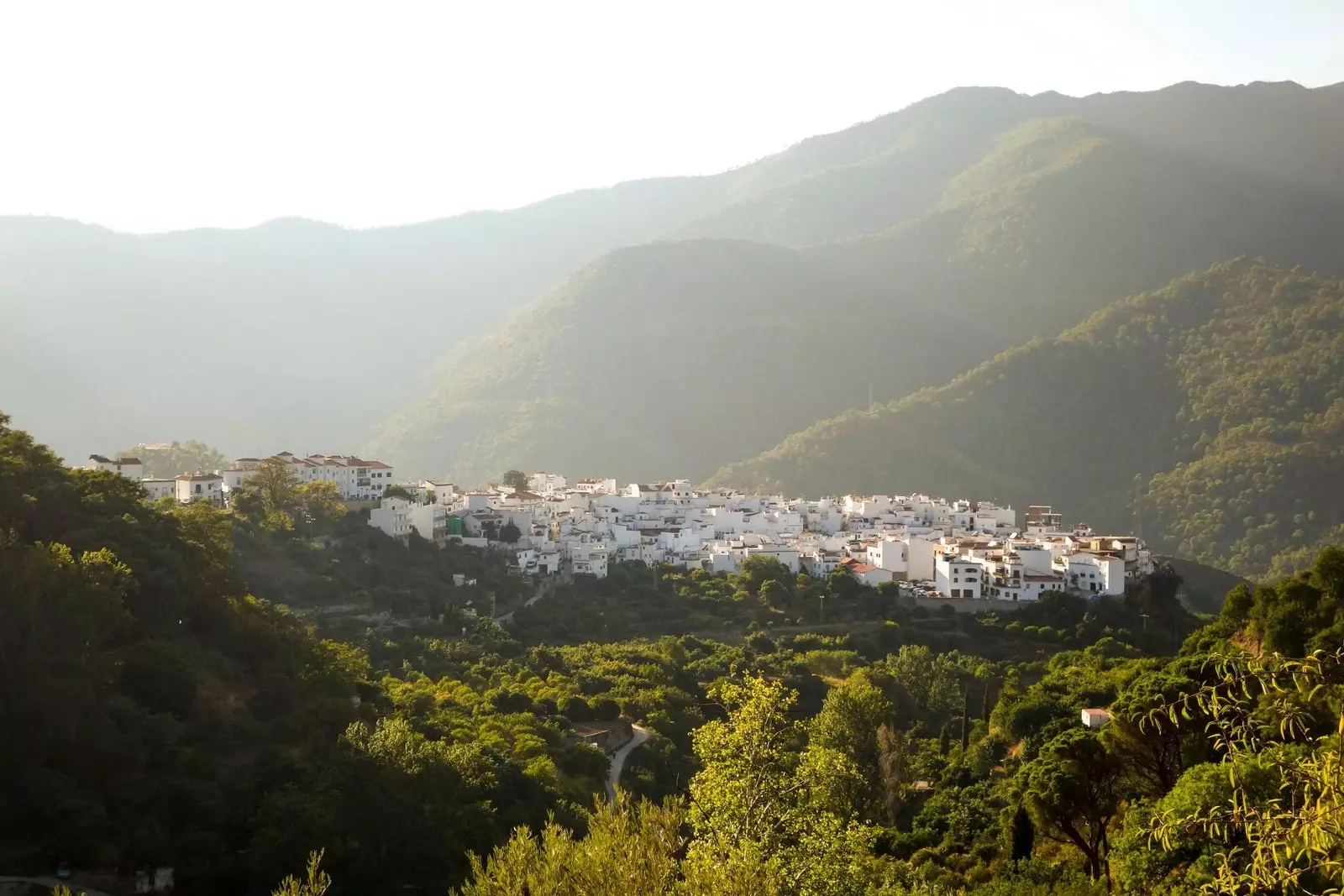
Istán, one of the beautiful white villages of the Sierra de las Nieves
White petals of almond blossoms; white mountain tops; white walls of the houses of the villages in silence. In winter, the Sierra de las Nieves honors the pale tone of its name, and also its cold. Not surprisingly, it is the only place on the otherwise luminous Costa del Sol where it snows regularly on those dates. So much so that, between the 16th and 20th centuries, tons of ice were extracted from its highest peaks that supplied different Andalusian cities, even reaching Ceuta and Gibraltar.
THE SIERRA DE LAS NIEVES, NEW NATIONAL PARK
23,000 hectares of natural spaces , dotted with the small municipalities of Tolox, Istán, Yunquera, El Burgo, Benahavís, Parauta, Monda, Ronda, Alozaina, Casarabonela, Ojén, Guaro, Serrato and Igualeja, make up the Sierra de las Nieves, declared Natural Park, World Biosphere Reserve by UNESCO and Special Conservation Area for Birds . In addition, it has three natural monuments, among them, the Escalereta Fir , a unique specimen of more than half a millennium of life in what is already a very unique species.
In fact, it is the pinsapo, a fir endemic to these mountains that is not found anywhere else in the world, with origins in the last ice age , the great protagonist of the Sierra and one of the main reasons why the environment has been described as National Park . The rest of the reasons are summarized for Traveler.es by Tomás Rueda, coordinator of the Sierra de las Nieves Biosphere Reserve : "The species, the ecosystems, the geology and the landscapes linked to the historical use that human populations have given to this place, and that are extraordinary".
Thus, together with the Spanish fir, the specialist highlights the mountain gall oaks, the great biodiversity of birds, some highly protected, -such as the griffon vulture, golden eagle, peregrine falcon , the goshawk, the sparrowhawk, the common buzzard, the eagle owl...-.
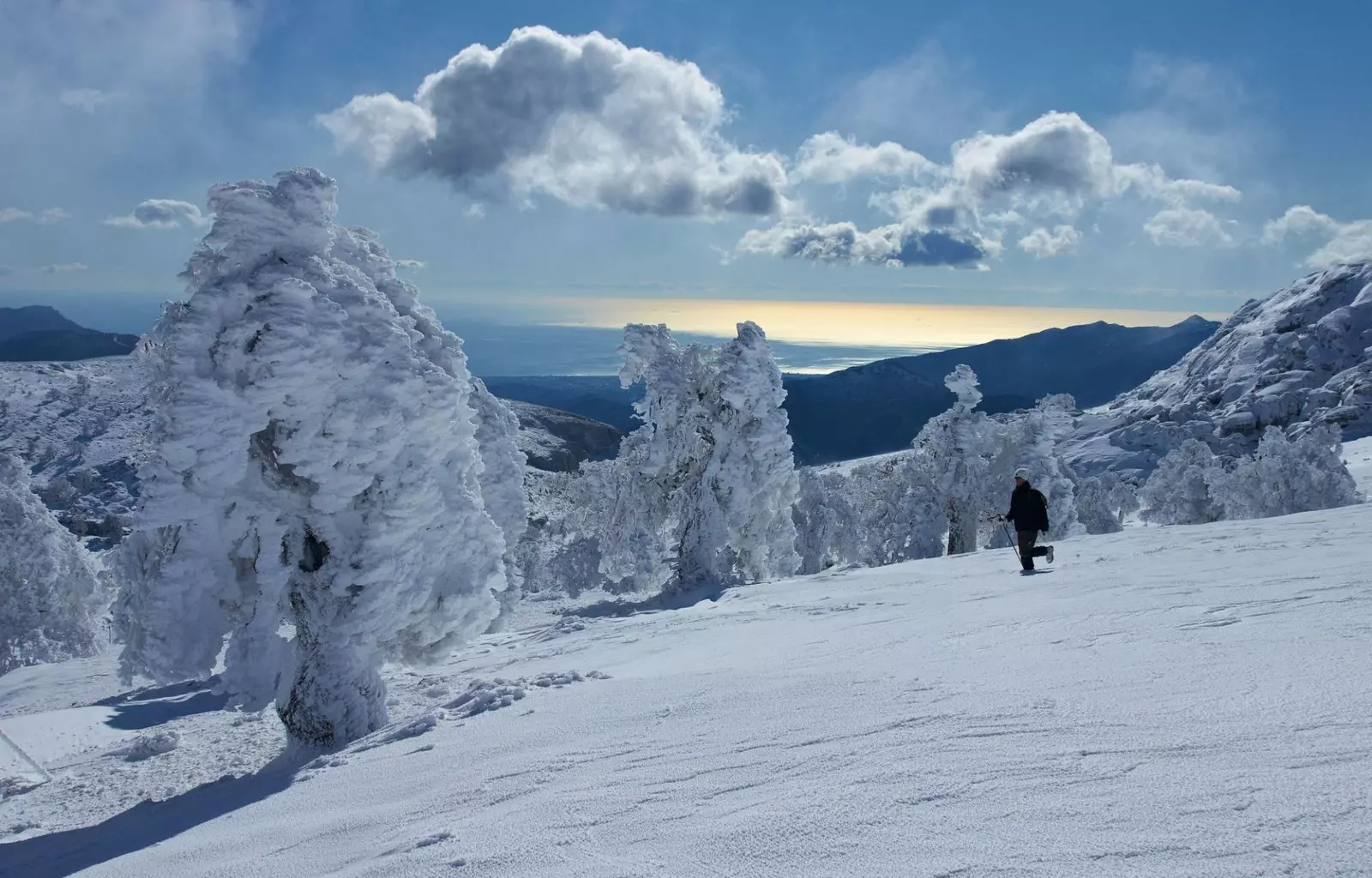
Every winter it snows in this part of Malaga, giving rise to breathtaking landscapes
Also among mammals there are several species. There are the roe deer, the wild boar, the mouflon, the fallow deer, the otter, the stone marten, the genet or the mongoose and protected animals such as the Wildcat. The Sierra even stands out for its fish and amphibians: the friar fish or the chub of Malaga populate its aquatic environments, as well as the crayfish, of which few specimens remain in the rest of Andalusia.
A curious fact: in the Natural Park there are 16 of the 31 species of bats that exist in the Iberian Peninsula, among them, seven threatened species such as the giant noctule, the largest European bat tree-dwelling, or buzzard bat.
In addition, among the multiple types of insects, there is an important group of butterflies (320) as well as a high presence of dragonflies , greater than in the rest of the peninsula.
Even the variety of fungi and mosses is striking, "all living on an authentic geological mosaic of limestone, peridotite and metamorphic rocks that make up both external and internal reliefs, with a great altitude gradient, make up one of the places with the highest biodiversity index in all of Spain", in the words of Rueda.
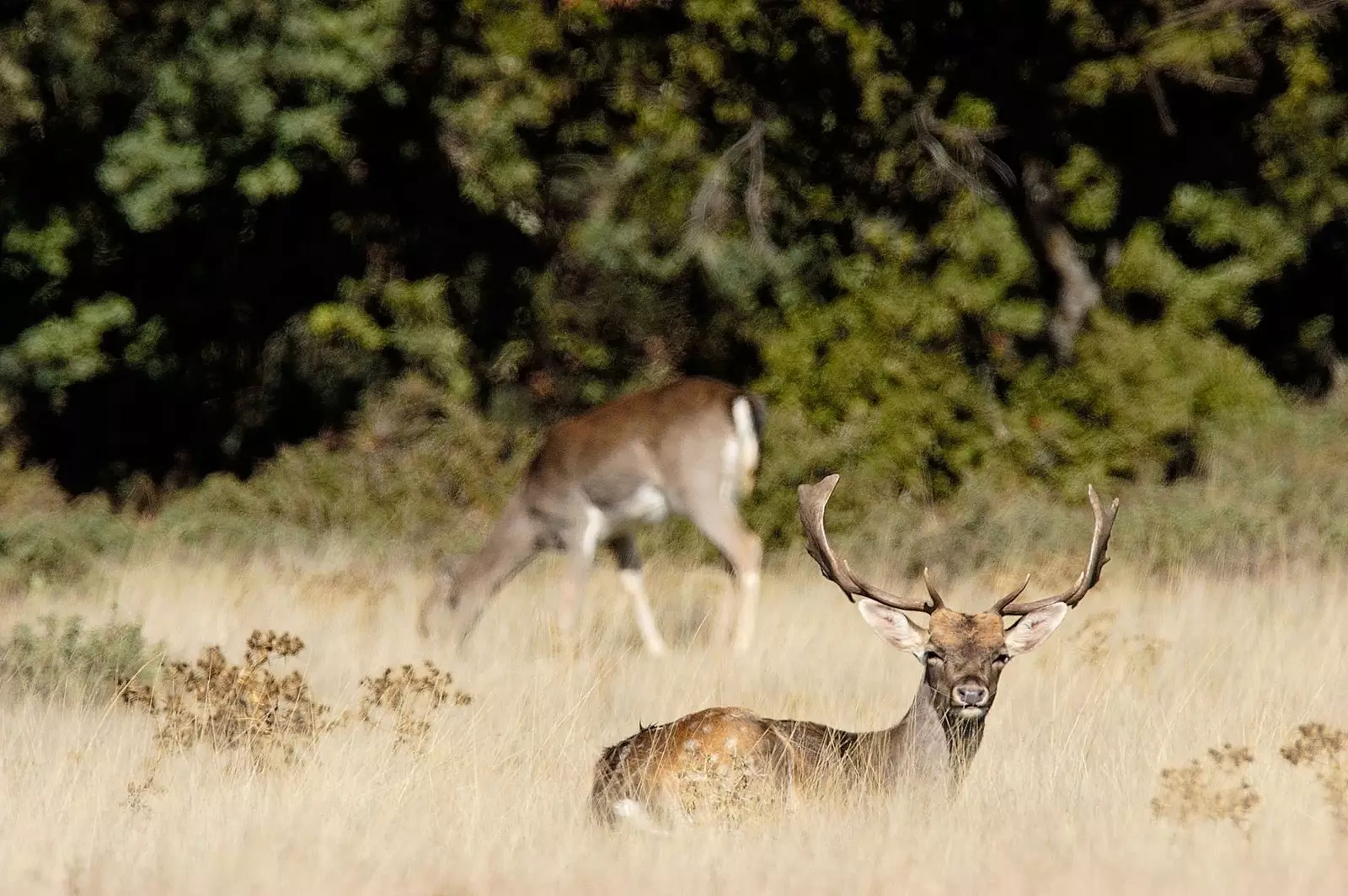
The biodiversity of the Sierra de las Nieves is very rich
The change of protection figure was a historical demand of the territory, which had nothing less than a century after the qualification of National Park. For practical purposes, this will mean, according to the specialist, greater recognition and attention on the part of the administrations, which will translate, they hope from the Park, into greater protection and research, as well as more investment in the area.
Becoming a National Park will also bring a rise in the number of visitors , which the professional hopes will translate into "greater social and economic development, the valorization of local products and the mitigation of depopulation problems of the area or the abandonment of traditional activities".
These ancestral practices still survive to a great extent in this region where man and the environment collaborate and are still in balance . It is not uncommon to see goatherds and sheepherders passing by, or to see, even from the car, old oil and flour mills in operation for decades, as well as traditional cheese factories and wineries.
"The Sierra de las Nieves is a space that has some unique singularities . It is an area where man and nature coexist in harmony. In addition to the extraordinary natural wealth, the forest and agricultural landscapes, shaped by thousands of years of traditional activities, the very stamps of the towns, with white houses grouped in twists and turns of narrow streets and the popular festivals that are celebrated in them, or a rich gastronomy, are, without a doubt, something that is worth not missing," Rueda tells us.
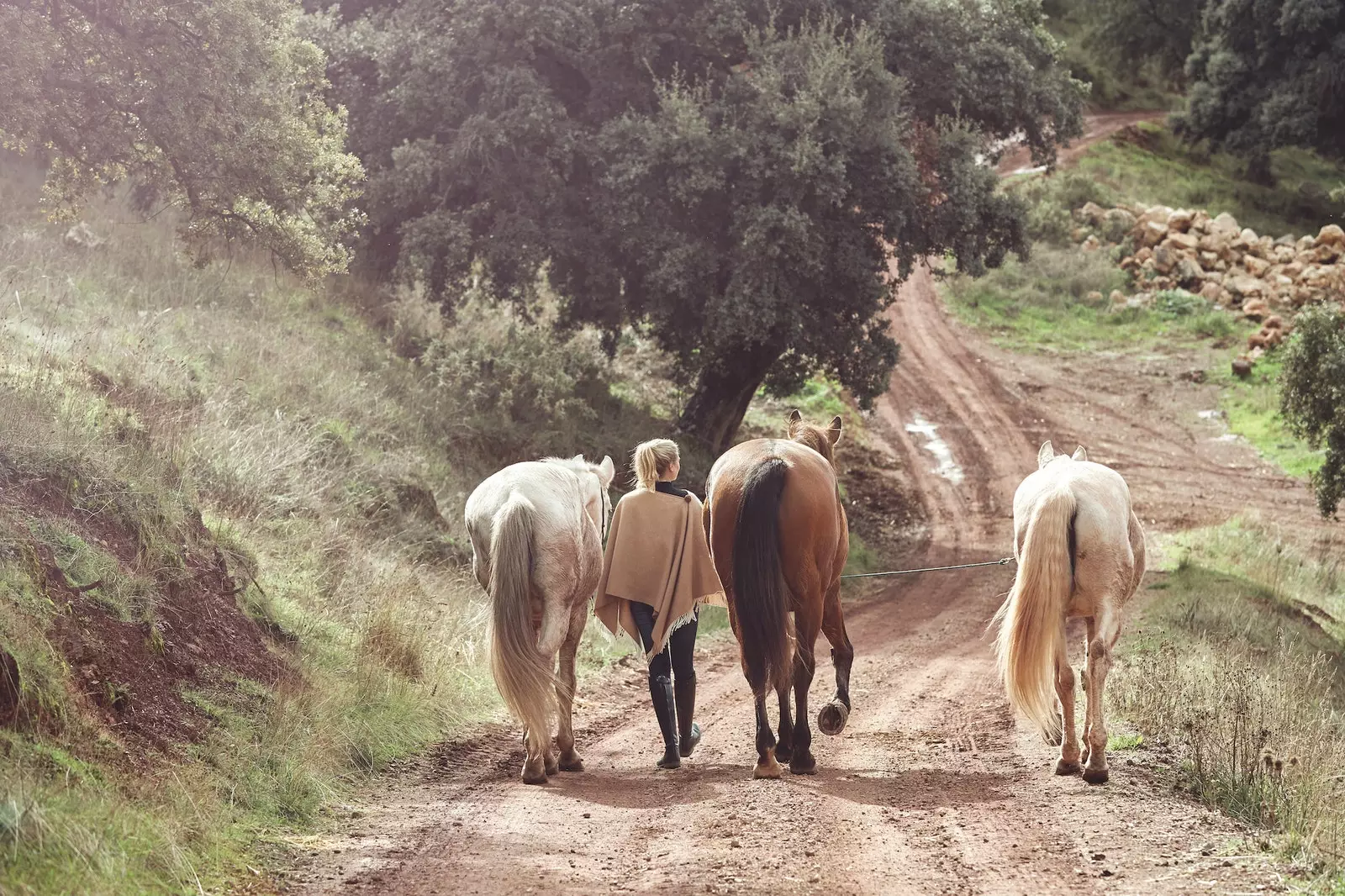
Ronda is full of 'eco-friendly' accommodation in which to enjoy the Sierra, such as La Donaira
TWO ROUTES THROUGH PINSAPARES TO ENJOY THE SIERRA DE LAS NIEVES
The expert also highlights the great diversity of trails that run through these lands, as well as the possibility of crown the highest peak in the province of Malaga, the Torrecilla, with 1,919 meters . Of course, for those who do not need to look at the world from so high up, there are routes of lesser difficulty but of extraordinary scenic value, such as the one that goes from Puerto Saucillo to Puerto Bellina and the one that runs from Caucón to Tajo de la Caína.
The first runs largely through a dense and almost mystical forest of Spanish firs -its oldest specimens, with branches and twisted shapes, can reach up to 30 meters- , in which it is not uncommon to find specimens of Mountain goat . It is located in the beautiful and quiet municipality of Yunquera.
Almost at the end, we will find the traditional snow pits , depressions in the ground, with stone walls, used to conserve snow and transport it in the form of ice, as we explained at the beginning.
As if that were not enough, the starting viewpoint, which is also the last stop on this 4.5-kilometre circular route, offers impressive views over the Guadalhorce river valley and the nearby Pietra and Cabrilla mountains.
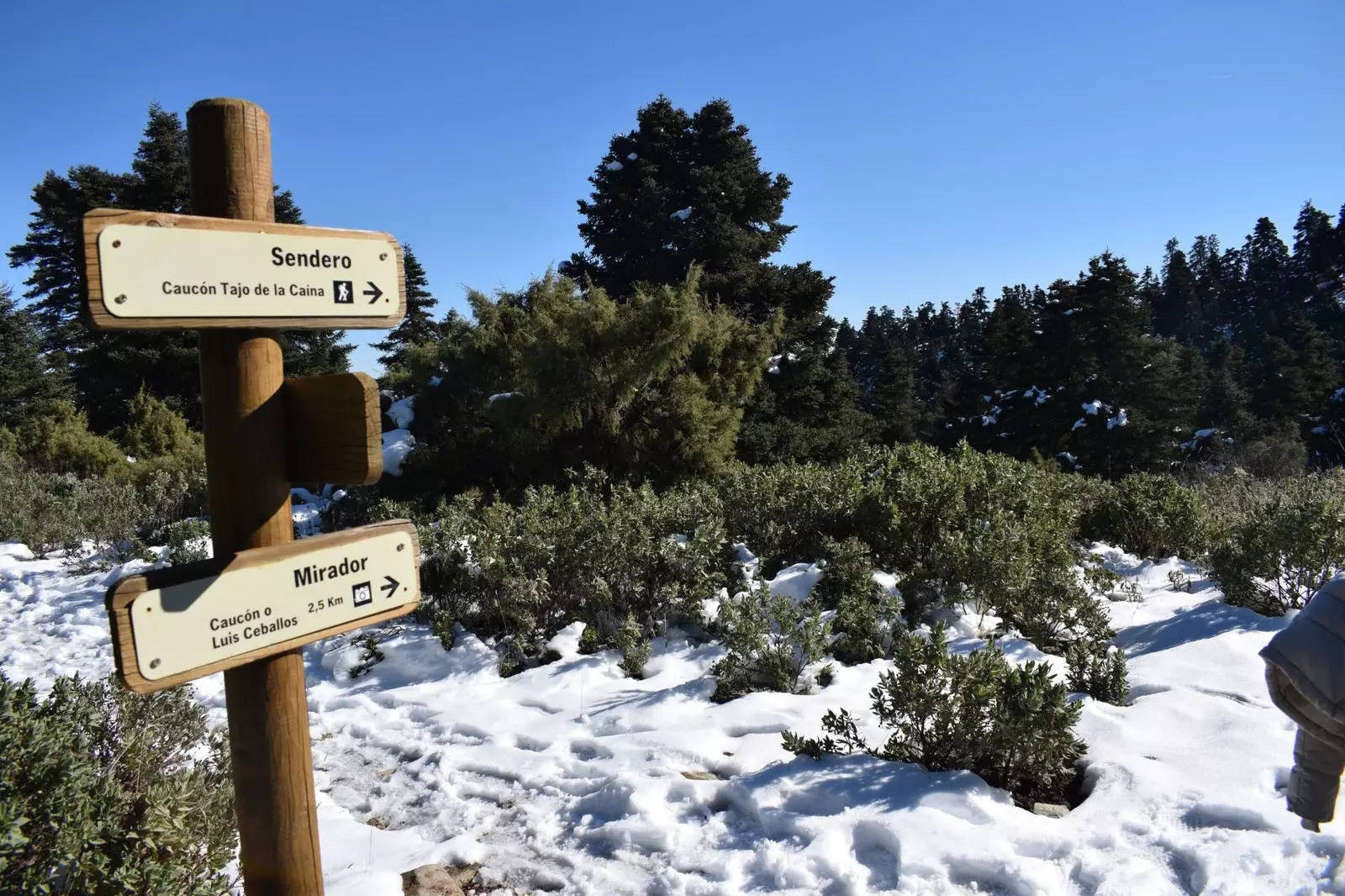
The route of the Luis Ceballos-Tajo de la Caína trail runs between Spanish firs
In the case of the path Caucón - Tajo de la Caina , the distance is 4.2 kilometers. the same It also begins in Yunquera and also crosses fir forests, as well as a geological landscape of strong contrasts. between the white mountain ranges of limestone nature and the ocher ones of intrusive origin.
The first thing that attracts attention is the beautiful landscape that the Luis Ceballos viewpoint , origin of the route. Next is the temperature drop which takes place inside the pinsapar: its motley specimens throw a carpet of shade and moss on the path, drawing an environment more typical of the forests of northern Spain than of the Mediterranean climate.
We will also visit another natural viewpoint, located in the port of the Gamones Era , with equally spectacular views that even reach the sea. Finally, we will arrive at the Tajo de la Caína, an imposing cut in the rock with a vertical drop of more than 100 meters. Over there, it is said, the Inquisition threw a woman nicknamed "la Caína", for dedicating herself to witchcraft.
WHAT TO DO IN THE SIERRA DE LAS NIEVES
In addition to hiking, in the area you can also carry out bike routes -they rent them, for example, in Parauta-, canyoning, caving and climbing -in Tolox-, canoeing and via ferrata tours -in Ronda-, horseback riding and paintball -in El Burgo-, kayaking -in the beautiful swamp of Istán-, bird watching and rural experiences -in Alozaina- and even** photographic and botanical tours**, also in Ronda. The Abeto del Sur ecotourism company also offers, in addition to many of the above, tailor-made experiences.
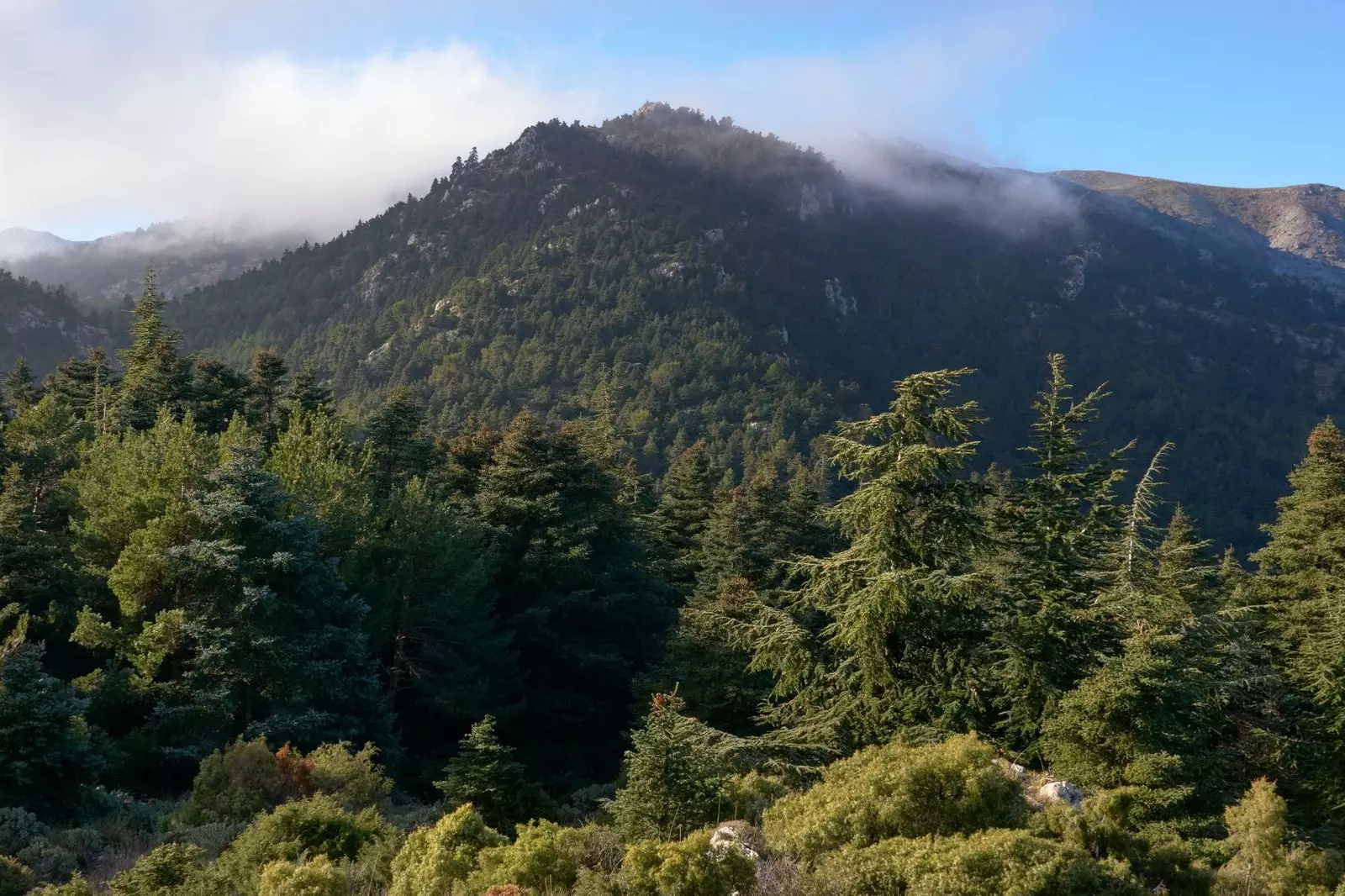
An unthinkable green landscape in the south
It's also worth making a tour of its most desirable towns -here you have a very complete guide-, and even a roadtrip from Coín, a municipality adjacent to the Sierra de las Nieves, to Ronda through the beautiful A366 road.
WHAT TO EAT IN THE SIERRA DE LAS NIEVES
"The gastronomy of the Sierra de las Nieves is based on the richness and variety of crops and the enormous amount of fruits and wild products of its mountains ", they explain from the Natural Park. "Livestock meat, all kinds of vegetables and seasonal fruits, olives, almonds and figs, cereals and endless legumes, join asparagus, mushrooms, tagarninas and thistles, countless aromatic plants or berries and wild berries, to coveted and tasty game ", they continue.
The olive oil , very produced in the area in an ecological way, is the star of the elaborations. Olive trees also provide the raw material for seasoned olives, broken and sweetened in brine with garlic, fennel, thyme and pieces of pepper.
The traditional dishes of the cuisine of southern Spain -gazpacho, puchero, stews, casseroles...- are also present in the surrounding towns, which also produce rich own soups like the mondeña , almost always cooked with leftover bread from previous days and accompanied by pieces of cucumber, onion, melon and even oranges.
The meats are served roasted or stewed, and are usually goat, rabbit, partridge, pork and lamb, flavored with herbs from the mountains , and in special parties, they are also served in the form of stew. Likewise, among the sausages, the morcón , a large pork casing in which a large piece of pork loin is inserted accompanied by the stuffing of the blood sausage or chorizo, all of which is cooked.
To accompany, Tolox or Yunquera must , and to finish, Guaro almond sweets and fresh goat cheese accompanied by honey from some of the many ecological dairies and beehives in the Sierra de las Nieves, a rural destination that has it all.
WHERE TO SLEEP IN THE SIERRA DE LAS NIEVES
In general, the hotel offer in the Sierra de las Nieves is not very extensive - the exception, as we will explain below, is Ronda. The only four star there is is Shanti Som (Monda), a true paradise of well-being, yes. With three, the Monda Castle stands out, an old fortification converted into accommodation and El Balneario (Tolox), founded in 1867 and located in a beautiful natural environment. It is the only one in Spain specialized exclusively in the respiratory system thanks to the gases in its waters.
El Refugio de El Juanar, also located in a spectacular chestnut grove in the Sierra de las Nieves (in Ojén), also stands out for its restaurant. In the same municipality there is another three-star hotel, Antigua Venta San Antonio, a restored 16th-century inn for stagecoaches, and in the town of Ojén, we also find La Posada del Ángel.
The Sierra de las Nieves has some other two and one star hotels, as well as hostels, although it stands out, above all, for its large number of rural houses. In Ronda, as we anticipated, there are dozens of high-quality hotels, such as the Catalonia Reina Victoria Welness&Spa and the Parador de Ronda, both located in the urban center, as well as others located in the middle of nature, such as the La Donaira ecotourism accommodation.
